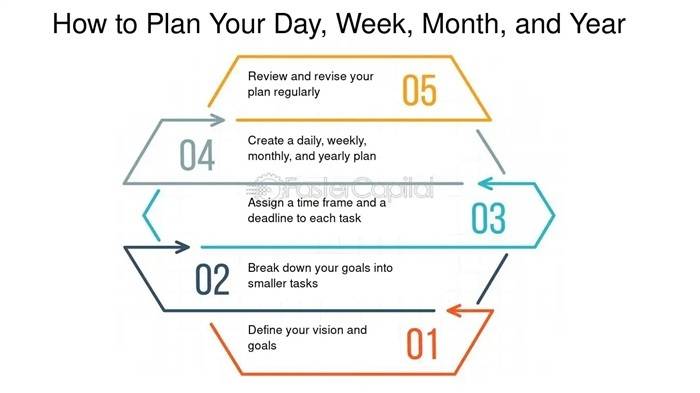
How Many Weeks in a Month: Your Monthly Time Math Guide
We break it all down into months vacation, homework, work, and rent. But if you sit and think about it every now and then, you may be wondering: how many weeks in a month? You’d think it’s a simple question, but the response isn’t always. Some months drag, some months fly, and determining how weeks equate to calendar days can be confusing.
In this detailed, basic guide we explain to you exactly what number of weeks a month has, why it is not possible to give a single answer, and how you may use it in everyday life. We will make it simple with examples, images, and Q&A so that you will never feel lost again.
Let’s find out how weeks and months actually work.
What Is a Week and a Month?

Let’s go back to basics. Then we will dive into the numbers.
What Is a Week?
A week is an interval of time which has 7 days. They are:
- Sunday
- Monday
- Tuesday
- Wednesday
- Thursday
- Friday
- Saturday
What Is a Month?
A month is an interval of time which was traditionally linked to the cycle of the Moon. A year has 12 months and they vary from 28 to 31 days.
Here is the list of months and their approximate days:
| Month | Days |
| January | 31 |
| February | 28 (29 in a leap year) |
| March | 31 |
| April | 30 |
| May | 31 |
| June | 30 |
| July | 31 |
| August | 31 |
| September | 30 |
| October | 31 |
| November | 30 |
| December | 31 |
Now, let’s convert those days to weeks.
How Many Weeks in a Month?
There isn’t one solution that fits all. But here’s the rule of thumb:
Most months have around 4.3 weeks.
Why 4.3?
To determine how many weeks in any month, divide the days by 7:
- 28 days ÷ 7 = 4 weeks
- 30 days ÷ 7 = 4.285 weeks
- 31 days ÷ 7 = 4.43 weeks
That is why we always loosely approximate each month as having “about” 4.3 weeks.
Breakdown of Each Month’s Weeks
Here is a more accurate breakdown of each month’s weeks:
| Month | Days | Weeks (Approx.) | Exact Breakdown |
| January | 31 | 4.43 | 4 weeks + 3 days |
| February | 28 / 29 | 4 / 4.14 | 4 weeks (or 4 + 1 day) |
| March | 31 | 4.43 | 4 weeks + 3 days |
| April | 30 | 4.28 | 4 weeks + 2 days |
| May | 31 | 4.43 | 4 weeks + 3 days |
| June | 30 | 4.28 | 4 weeks + 2 days |
| July | 31 | 4.43 | 4 weeks + 3 days |
| August | 31 | 4.43 | 4 weeks + 3 days |
| September | 30 | 4.28 | 4 weeks + 2 days |
| October | 31 | 4.43 | 4 weeks + 3 days |
| November | 30 | 4.28 | 4 weeks + 2 days |
| December | 31 | 4.43 | 4 weeks + 3 days |
And Something About Leap Years
A leap year every 4 years. And an extra day in February.
So:
- Normal February = 28 days = 4 weeks
- Leap Year February = 29 days = 4 weeks + 1 day
Leap years don’t really have much effect on the number of weeks in a year. But they do move calendars and timetables slightly.
How Many Weeks Are in a Year?
To view the full information about years and weeks, you may be thinking:
There are 52 weeks in a year.
This is how we get that:
- 1 year = 365 days (366 in leap years)
- 365 ÷ 7 = 52.14 weeks
- 366 ÷ 7 = 52.29 weeks
There are then about 52 whole weeks in a year with 1 or 2 days left over.
How Many Months Have 5 Weeks?
Surprise: some months appear to have 5 weeks.
Wait didn’t we just determine most to have a little over 4 weeks?
Here’s the Catch:
A month will contain 5 weeks if it:
- Has 31 days
- Has a Thursday, Friday, or Saturday start date
Why? Because it occupies 5 weeks on the calendar, but not all weeks are utilized.
Examples of 5-Week Months
- March 2024
- August 2025
- May 2026
In these examples, the month spans 5 lines on the calendar, and hence some refer to them as “5-week months.”
Why Knowing This Is Important

Knowing the weeks within a month does a whole lot in life.
1. Budgeting
If you’re receiving pay weekly or biweekly, it’s helpful to know the number of pay periods within a month when bills must be paid.
5-week months may have an “extra” paycheck.
2. Rent and Subscription Plans
Rent is monthly by landlords, but perhaps you’re paid weekly.
Auto-renewal subscriptions recurring every 4 weeks don’t require synchronization to calendar months.
3. Work Schedules
Companies budget by the week, not the month.
Planning time off or employee scheduling is easier with accurate week counts.
4. Health and Goal Monitoring
Weekly meetings are where plans are most likely to be made.
With weeks per month, accurate short-term goals can now be established.
Also Read: When Calls the Heart Season 11
Converting Weeks to Months and Vice Versa
Weeks to Months
Since 1 month ≈ 4.3 weeks, weeks are divided by 4.3.
Example:
8 weeks ÷ 4.3 ≈ 1.86 months
Months to Weeks
Multiply by 4.3.
Example:
3 months × 4.3 = 12.9 weeks
Common Planning & Calendaring Mistakes
People often make errors when:
- Estimating 4 weeks a month: That is accurate only in February (non-leap years). Most months are a bit more.
- Forgetting leap years: That will change schedules, holidays, and school years.
- Mixing up “5-week months” with 35-day months: A month can certainly have 5 weeks but not 35 days.
- Leaving out half weeks: Some calendars count any week the month falls in. Even though the month is only for 1 or 2 days.
Frequently Asked Questions About Number of Weeks in a Month
How many weeks in a month precisely?
All but the shortest one, approx 4.3 weeks long. February is 4 weeks. And 30- or 31-day months take more than 4 weeks.
What month always contains 4 complete weeks?
February always has 4 weeks or 28 days. Except the leap years
Can a month ever contain 5 complete weeks?
A month might appear to have 5 weeks if it happens to be in 5 weeks of the calendar, but only 28–31 days.
Why 4.3 weeks in a month?
Because 30 or 31 divided by 7 (a week’s days) leaves some 4.28 to 4.43. That is some 4.3 weeks on average.
How many months have 31 days and more than 4 weeks?
Seven months have 31 days. They are: January, March, May, July, August, October, and December. They all have more than 4 weeks.
Knowing the Weeks Makes Planning Easier
So how many weeks in a month?
Typically a little more than 4 about 4.3 weeks on average. Every now and then. However it depends on the calendar configuration. And you’ll have some 5-week months. It’s worth understanding how the days, weeks, and months relate. Because it makes scheduling easy. It makes budgeting simple. And it makes planning a piece of cake.
Here’s the one thing to memorize:
- To figure out weeks, divide by 7
- Make 4.3 a working monthly average
- Be aware of leap years and 5-week calendar setups
With this knowledge of weeks in a month, you’ll be able to plan smarter each month of the year.



